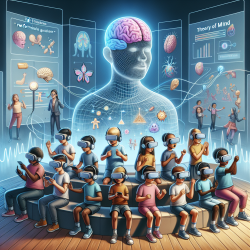Introduction
In the realm of pediatric neurodevelopmental disorders, both Autism Spectrum Disorder (ASD) and Childhood Onset Schizophrenia (COS) present significant challenges. These conditions, while distinct, share some underlying genetic architecture, making their study crucial for advancing therapeutic interventions. Recent research, such as the comprehensive review on neuroimaging findings in these disorders, provides valuable insights that can guide practitioners in improving outcomes for affected children.
Key Findings from Neuroimaging Studies
The review highlights several critical neuroimaging findings:
- ASD: Early brain overgrowth in the first few years of life is a hallmark, followed by dysmaturation during adolescence. Functional analyses indicate impaired long-range connectivity but increased local connectivity.
- COS: Deficits in cerebral volume, cortical thickness, and white matter maturation are most pronounced during childhood and adolescence. There is evidence of increased long-range connectivity, suggesting exaggerated cortical thinning.
Implications for Practitioners
Understanding these neuroimaging patterns offers several benefits for practitioners:
- Early Identification: Identifying atypical brain growth patterns can aid in early diagnosis and intervention, potentially improving long-term outcomes.
- Targeted Interventions: Knowledge of specific connectivity issues can inform the development of targeted therapeutic strategies to address the unique needs of children with ASD or COS.
- Biomarker Development: The search for clinical biomarkers based on neuroimaging data is crucial for developing biologically-based diagnostic categories and treatment responses.
Encouraging Further Research
While the findings are promising, further research is necessary to refine these insights. Longitudinal studies capturing early postnatal periods and maximizing signal-to-noise ratios across heterogeneous conditions are essential. Practitioners are encouraged to engage with ongoing research efforts and consider contributing to large-scale studies that can enhance our understanding of these complex disorders.
Conclusion
The neuroimaging literature supports a neurodevelopmental origin for both ASD and COS, highlighting dynamic changes in the developing brain. By leveraging these insights, practitioners can enhance their diagnostic and therapeutic approaches, ultimately leading to better outcomes for children.
To read the original research paper, please follow this link: A Comparison of Neuroimaging Findings in Childhood Onset Schizophrenia and Autism Spectrum Disorder: A Review of the Literature.










